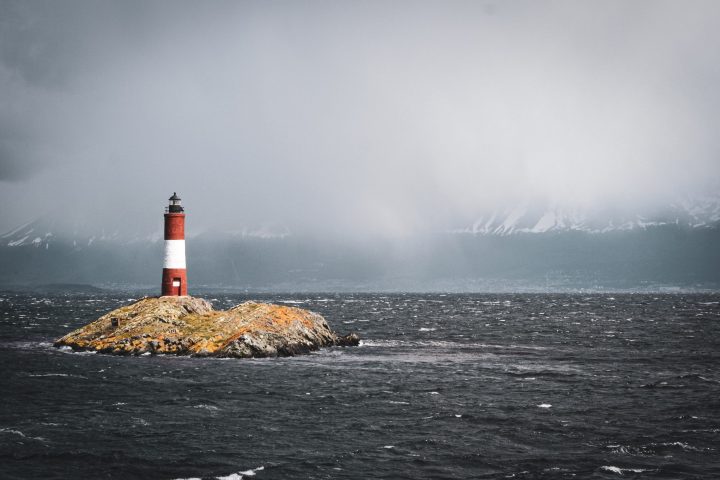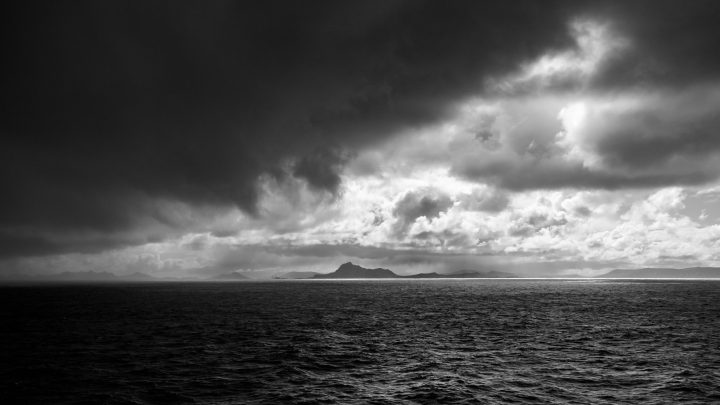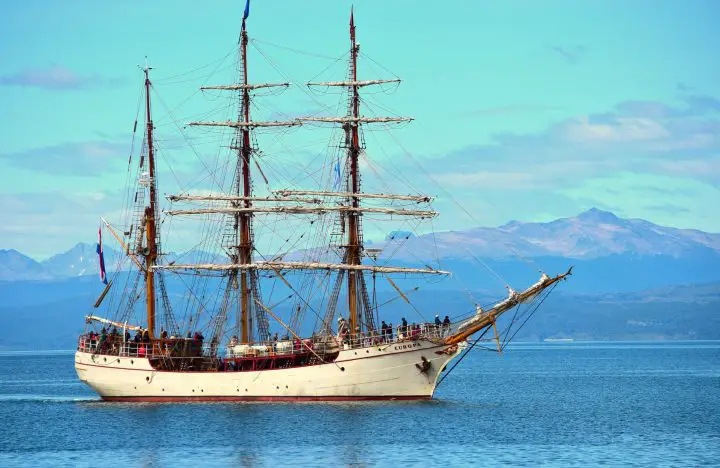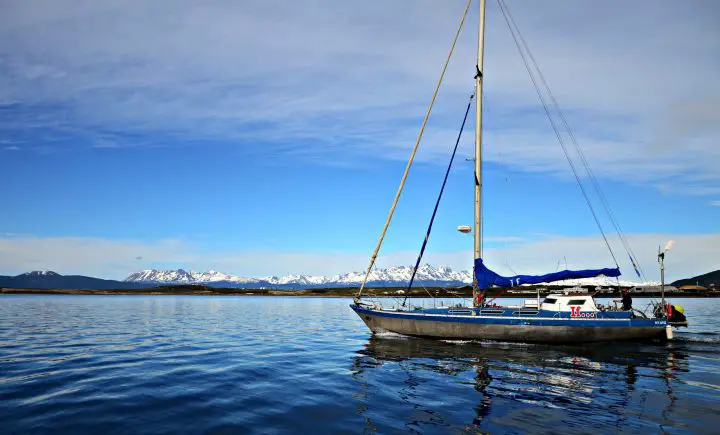There are trips that anyone can do in the sailing world, and then there are trips that only adventure-seekers want even to try. Hopping from Florida down to the Caribbean? Hundreds of boats do it every year. Crossing the Pacific Ocean from Central America to French Polynesia? Dozens of boats make the 20-plus day passage annually.
These trips, often made downwind in temperate climates, are commonly called “milk runs.” Far fewer sailors dream of high-latitude sailing. When you stray too far from equatorial waters, weather systems start getting more intense, and the level of discomfort goes up dramatically.
And then there are the world’s famous capes. A cape is a point of land that sticks out into the water. On the southern tip of Africa, there is the Cape of Good Hope. And mirroring it on the other side of the Atlantic is Cape Horn–sometimes called the “sailor’s graveyard.”
Table of Contents
- What and Where is Cape Horn?
- Why is Cape Horn Famous?
- History of the Clipper Routes
- Modern Use of Cape Horn
- Straight of Magellan
- Panama Canal – Skip South America
- To Round Cape Horn – Dangerous or Doable?
- FAQs – Questions About Sailing Around Cape Horn

What and Where is Cape Horn?
Cape Horn lies on the southernmost point of South America. The actual point of land is on Isla Hornos, the southern island of Tierra del Fuego in Chile.
The point of Cape Horn lies at 56 degrees south latitude, much farther south than the Cape of Good Hope. In fact, it is the southernmost landmass in the world outside of Antarctica. And speaking of the southern continent, only the narrow Drake Passage separates Cape Horn from the Antarctic Peninsula.
The area is probably the most hazardous region for ships and sailing in the entire world. Just like anywhere else, you can travel safely if you proceed with an abundance of caution. But for the unwary, hazards abound.
For one thing, at those latitudes, the winds howl. Wind speeds commonly top 60 knots, something that only occurs during the worst of storms in other areas. In addition, those strong winds build up massive waves and ocean swell, all of which meet in the constricted space between South America and Antarctica.
One thing about capes is that they often amplify weather. The landmass acts as a venturi, funneling winds and making them strong. Ocean currents often accelerate, meet, and divide here as well. The whole thing is a cauldron for unpleasant and challenging sailing conditions.
Its proximity to Antarctica also means that icebergs are a possibility. And the extreme southern latitude, of course, means that temperatures are cold, and the amount of daylight is limited even in the summer.
The Chilean Navy operates a small rescue station on Hoorn Island, including a lighthouse and a chapel. There’s also a memorial on the island to the sailors who have died attempting the passage around “The Horn.” It was erected in 1992. Ironically, it toppled in high winds in 2014 and had to be repaired.

Why is Cape Horn Famous?
Before the Panama Canal was created, The Horn was a vital shipping lane. It was the only way from Europe around the Americas and into the Pacific. Once around, ships could sail back north to safer latitudes and continue onto the west coast of the Americas, Oceania, and Asia.
The first people to round The Horn were Willem Schouten, a Dutchman, and Jacob Le Maire, a Belgian. They named it Kaap Hoorn after a city in the Netherlands. That was back in 1616.
The Panama Canal did not open to traffic until August of 1914. So for the 300 years before that, all ships had to round Cape Horn. The “clipper ships” specialized in making that passage as quickly as possible from New York to San Francisco in America. Before the railroads connected the two coasts, this was economically the easiest way to move large cargo.
History of the Clipper Routes
The clipper routes were necessary for the entire world, however. Clipper ships were designed to move quickly between Europe and the Far East. The strong winds that make Cape Horn so dangerous also made for swift passages.
Outbound from Europe, ships would head south down the Atlantic Ocean and keep Africa on their port (left) side. Then, they would continue south into the Roaring Forties, where they would arrive about 43 days after leaving England.
Once there, the ship was in the Southern Ocean and could effectively sail anywhere around the globe. For example, in the mid-1800s, fast clippers used this route to sail from England to Australia in about 100 days.
To get home, ships would call on New Zealand and then continue heading eastbound with the prevailing winds in the Roaring Forties. Finally, by keeping Cape Horn to port, they would sail northbound in the Atlantic and return to England.

Modern Use of Cape Horn
Joshua Slocum was the first to round Cape Horn solo during his 1895 circumnavigation in his small sloop Spray. That famous journey has inspired sailors for generations and is detailed in Slocum’s novel, Sailing Around the World Alone.
What is interesting about Slocum’s voyage is that he rounded The Horn going from east to west. His goal was not a speedy passage in the hazardous Roaring Forties but rather a personal journey of travel and experiences. His small oyster boat was not built for the rigors of those latitudes, anyway.
Slocum’s experience at Cape Horn is telling—firstly, he transited the Straight of Magellan instead of the narrow Drake Passage. What’s more, he wound up waylaid and stuck in Chile for more than 40 days due to rough weather and an unrelenting storm.
Rounding the Cape is reserved for the adventurous souls among us, just like straying into the Roaring Forties is. Today, it is reserved for adventure or endurance racers and those looking to mark a place in a record book. While the huge clipper ships of the 1800s needed the winds and the extra space to maneuver that the Drake Passage offered, today’s powered ships and small sailboats usually prefer the Straight of Magellan.
Straight of Magellan
If you’re heading around Cape Horn from east to west, getting in the middle of the Drake Passage against the prevailing winds and currents is probably not the best plan. But, luckily for sailors, there is another way.
Like Slocum, you can head through the Straight of Magellan. The route crosses through southern Chile and the islands of Tierra del Feugo. Ferdinand Magellan discovered it in 1520.
It still isn’t an easy route. It’s a narrow passage with shallow areas, strong winds, and currents. These days, modern ships must take on a pilot to navigate the route. Still, compared to the Drake Passage south of Cape Horn, the Straight of Magellan is the safer choice.

Panama Canal – Skip South America
Shipping around Cape Horn was significantly reduced when the Panama Canal was built. Even with canal fees, the time and cost saved by not having to round South America are immense. It also is a much safer route.
The canal isn’t just reserved for commercial shipping. It’s used by hundreds of private boats every year, and it is now the favorite route for circumnavigators. The canal allows you to transit east or westbound, and while doing so is expensive, it is relatively safe and only takes a few days.
To Round Cape Horn – Dangerous or Doable?
Despite its southerly latitude and many hazards, the Drake Passage and Tierra del Fuego are no different from any other cruising area. We live in a time of incredibly accurate weather forecasts. As a result, we have advantages that the sailors of yesteryear, be they 200-plus foot clipper ships or Slocum in 34-foot Spray, never had.
Take, for example, the tale of Lin and Larry Pardy who rounded Cape Horn. The pair experienced winds light enough to fly their nylon drifter sail, ghosting over flat calm water. But they also experienced days of beating into gale-force winds, biting cold, and snow flurries, and hail storms before they got there and after they left. The trip was far from uneventful, as Lin shared their experiences in an article for Cruising World.
FAQs – Questions About Sailing Around Cape Horn
Is it safe to sail around Cape Horn?
Sailing around Cape Horn is often noted as the yachting equivalent to climbing Mount Everest. Is it safe? Of course, it can be accomplished safely by a well-founded boat with an experienced and careful crew.
But sailing around Cape Horn is not for the faint of heart. The Cape has a deservedly fierce reputation. For more than a quarter of the time, winds blow between Force 8 and 12. Plus, strong currents plague the area, as do shoals and dangerous large waves. Icebergs, currents, and shoal waters are also hazards along the way.
Why is it so hard to sail around Cape Horn?
Cape Horn, at the southern tip of South America, is the southernmost Cape. It lies very close to Antarctica, and as such, it experiences some really nasty weather. Gale and storm-force winds are prevalent and are made worse by storms rolling down the Andes mountains. The area also experiences strong adverse currents, making slow passages for boats rounding.
Even if you pick a time of good weather, passage around The Horn should never be attempted by anything less than a well-founded boat with a well-trained and experienced crew.
How hard is it to sail around Cape Horn?
Rounding The Horn is likely one of the most challenging areas to sail in the world. Seemingly, everything is against the sailor of a small vessel. The weather is bitterly cold, daylight hours are limited even in the summer months, winds blow constant gales that can last weeks, and the weather is unpredictable and erratic.
Like climbing Everest or crossing the Pacific, rounding The Horn is not something a sailor does without a lot of preparation. Years of study and research go into the journey—maybe even just into the decision to make the journey at all.
How long does it take to sail around the Cape Horn?
Sailing around Cape Horn is all about the weather. But even in good weather, the trip is challenging and full of unknowable variables.
Currents and winds favor an eastbound rounding. Many sailors, however, round Cape Horn on their way westbound across the Pacific. If this is the case, an alternate route is available through the Straight of Magellan. It is slightly shorter and safer for modern vessels than striking out through the Drake Passage.
Like any grand adventure, the trip is made in stages. An entire journey around South America might take as much as a year. However, the actual rounding of the Cape, which is a single point on the journey, won’t take but a few hours.
